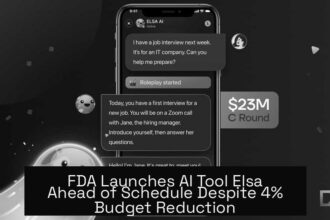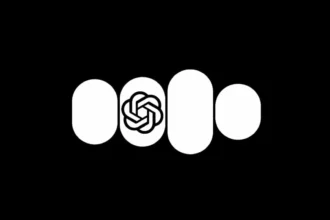Have you ever wondered what it takes to turn a lifeless machine into a conversational maestro? Training an AI chatbot is like teaching a toddler to speak—it’s all about nurturing it with the right words and context. Before you dive into the intricacies of algorithms and datasets, preparation is key. Imagine equipping your digital offspring with a rich tapestry of real-world interactions; customer support tickets, social media chatter, and user feedback should be your building blocks.
The journey begins here, forming the very foundation for your chatbot’s natural language prowess. Let’s explore how to lay this groundwork effectively.
Table of Contents
ToggleHow should I prepare before training an AI chatbot?
Preparing for AI chatbot training is a crucial step that can significantly impact the effectiveness of your chatbot’s responses.
Start by collecting a rich dataset from multiple sources—this could include customer support tickets, social media interactions, user reviews, and essential product documentation.
These real-world scenarios form the core foundation upon which your AI will learn, allowing it to process language more naturally and contextually. As you gather data, it’s important to ensure its quality.
This means not just accumulating information but also cleaning and organizing it meticulously. Eliminate any irrelevant or redundant data that could lead the chatbot to learn incorrect patterns or make flawed associations.
Think of it like tuning an instrument; the clarity of sound is paramount, and so too is the clarity of information your AI will digest.
Next, take the time to categorize user queries by defining clear intent categories. This helps in modeling how customers might articulate their questions in varying ways.
For example, a customer might ask, “How do I reset my password?” or “What’s the process for password recovery?” Recognizing these nuances enhances your chatbot’s ability to interpret user intents accurately and improves its responsiveness across diverse interactions.
This foundational work not only streamlines training but also ensures that when questions arise, whether simple or complex, your chatbot will be well-equipped to handle them proficiently. Remember, in training an AI chatbot, you’re not just programming responses; you’re crafting a conversational partner that mirrors human-like engagement.
Lastly, consider involving a diverse team in this preparation process. Diverse perspectives can lead to uncovering various ways users may phrase their queries that you might not have thought of otherwise. A rich pool of ideas ensures your chatbot learns from a broad spectrum of language use—like an artist drawing inspiration from different cultures and styles.
With all this groundwork laid out thoughtfully, you’re setting up your AI chatbot for greater success and enhancing its ability to engage effectively with users across a range of scenarios.
What approach should I take when training my AI chatbot for understanding user intents?
When it comes to training an AI chatbot to effectively understand user intents, a structured approach is essential. Start with the foundational practice of defining distinct intents. Each intent should cater to one clear purpose to prevent confusion for the chatbot and ultimately for the user. Then, implement intent classification; this crucial step involves categorizing user queries into specific intents, allowing the chatbot to grasp the underlying motivations behind each inquiry.
Utilize reinforced training techniques throughout the development process. This entails creating a feedback loop, where your chatbot learns from its mistakes by receiving constructive feedback on its responses.
By fostering an environment where trial and error play a significant role, you’re equipping your bot with the ability to evolve and improve its understanding over time. The more data and varied utterances you feed into the system, the better it becomes at discerning the nuances in human language.
Remember, your AI must not only comprehend direct questions but also recognize alternative ways users might phrase them. This flexibility transforms outcomes dramatically; an adept chatbot will handle diverse questions with dexterity rather than becoming frustrated or confused. For instance, if a customer types “How do I reset my password?” versus “I forgot my password—what now?” both should map seamlessly to your password reset intent.
Additionally, it’s valuable to incorporate a diverse array of sample utterances during both development and testing phases.
Assess how closely these utterances align with real-world language use; this will improve usability and enhance the overall experience for users interacting with your bot.
Investing time and resources into understanding user intents not only enhances your chatbot’s performance but also ensures that it delivers meaningful interactions that resonate with customers’ needs. With careful attention paid to intent classification and continual refinement through feedback, you’ll cultivate a highly responsive AI companion that enriches customer experiences across the board.
Can I train my AI chatbot with my own data
Absolutely! Training your AI chatbot with your own data is not just possible; it’s essential for optimizing its effectiveness.
Think of it this way: when you feed your chatbot specific data tailored to your business or industry, you supercharge its ability to engage in meaningful conversations with users. This is particularly important in platforms like ChatGPT, which can adapt and learn from the context provided.
Start by adding diverse NLP triggers such as keywords, common questions, phrases, and other linguistic patterns that reflect typical inquiries your customers might have.
This means sifting through customer support tickets or dissecting social media chatter to extract the essence of what users are asking. The more comprehensive and varied the data you input, the more nuanced your chatbot’s understanding of customer intent becomes.
The benefit here extends beyond improved accuracy; it cultivates a personalized interaction that feels tailor-made for each user. Imagine a customer asking a question about a product feature and receiving an instant, precise response that reflects their unique context—it’s a game-changer! Such tailored training not only enhances user satisfaction but also builds trust and fosters loyalty.
Moreover, as you continually input high-quality questions linked to equally high-quality answers, you’re creating an evolving learning environment for your chatbot.
This iterative approach allows the bot to adapt over time, ensuring it can handle an expansive array of inquiries—from simple FAQs to more complex customer needs—effectively simulating a human-like conversation experience.
Ultimately, investing in training your AI with specific data isn’t just an enhancement; it’s a strategic move to revolutionize user interaction within your platform. So go ahead—dive into that wellspring of data at your fingertips and let your chatbot thrive!
What are the key steps in an effective AI chatbot training guide?
When it comes to training an AI chatbot effectively, there are several crucial steps that can help set the stage for success:
- Prepare the Data: Begin by gathering a diverse dataset from multiple sources. This could include customer inquiries, support tickets, social media interactions, and product documentation. The quality and relevance of this data are paramount; it’s the foundation upon which your chatbot will learn how to engage naturally.
- Classify User Intents: Next, define clear intent categories. This step helps you understand the various ways users may phrase their queries, whether it’s asking for password reset processes or inquiring about product features. A well-categorized intent system ensures your chatbot interprets user intents accurately, leading to more effective responses.
- Extract Entities: Identifying relevant entities–such as product names, dates, or key terms–is essential. These elements provide context to the queries and enhance the chatbot’s ability to respond accurately to user inquiries.
- Train the NLP Model: Use the prepared data to train your Natural Language Processing (NLP) model effectively. This involves implementing algorithms that allow your bot to understand language nuances and discern meaning behind user inputs.
- Create Responses: Develop tailored responses based on your defined intents and extracted entities. This should feel less like scripted text and more like a dynamic conversation—each response should resonate with user expectations and context.
- Add Context and Memory: Incorporate features that allow your chatbot to remember past interactions. This gives a human touch to conversations; for instance, recalling a user’s previous query can lead to smoother dialogue flows and increase engagement.
- Test and Evaluate: Regularly assess your chatbot’s performance through various testing scenarios. This includes checking its ability to accurately classify intents and extract entities while ensuring responses are engaging and contextually appropriate.
- Keep Improving: Lastly, embrace an ongoing feedback loop. Use insights gleaned from user interactions to refine and enhance your chatbot’s capabilities continually. The aim is not just to maintain effectiveness but also to evolve alongside user expectations and language trends.
This structured approach not only helps you build a competent AI chatbot but also fosters an experience that feels genuine and responsive—akin to having a real conversation partner by your side.
How long does it typically take to train an AI chatbot?
The duration required to train an AI chatbot varies depending on its complexity, integrations, and customization needs. For basic rule-based chatbots, you might be looking at a setup time of just a few days. However, if you’re developing a more advanced AI-driven chatbot, the training process can extend to several weeks or even months.
Consider the intricacies involved in these projects. Simple chatbots deal with straightforward interactions and predictable responses, making them quick to configure.
In contrast, sophisticated AI chatbots must analyze diverse user inputs, learn from interactions, and integrate complex functionalities—this demands a substantial investment of time and resources. As a developer, it’s crucial to clearly define your chatbot’s goals and requirements at the outset; this will allow you to set a realistic timeline for development and deployment.
Moreover, think about the iterative nature of AI training. Continuous improvement based on user feedback can enhance your bot’s performance post-launch, so factor in additional time for iterations after initial deployment.
The journey may take longer than expected, but with careful planning and commitment, the end result—a nuanced conversational partner—is well worth the effort.
If you need technical help for training your chatbot, feel free to live connect with me!





